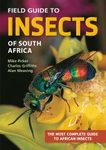About this book
This study represents a biosystematic revision of the European Stratiomyidae, or soldier flies (Diptera), summarizing basic information on their morphology, biology, ecology, distribution, economic importance and taxonomy. The entire monograph is divided into two volumes. This is the first volume and it comprises 1) an introductory section which contains a historical review and chapters on adult morphology, morphology of immature stages, biology and ecology, faunistic research in individual European countries, distribution and biogeography, economic and hygienic importance, material examined and methods used, and current views on the classification of the family, and 2) the first half of the systematic part, on the subfamilies Beridinae, Sarginae and Stratiomyinae. The monograph is based on the critical evaluation of the literary sources, beginning with Linné (1758), and on the extensive material (more than 15,000 specimens) from the author's samples, from the collections preserved in 35 European institutions, and from 24 private collections of specialists living in various European countries.
The morphological terms are unified with regards to their unambiguous use in keys and species characteristics. Special attention is paid to the male as well as female terminalia as important specific criteria. In the survey of the morphology of immature stages especially the terminology of the larval body is completed, and the structures of the bucco-pharyngeal apparatus and the larval chaetotaxy are particularly studied in detail. Basic data on the development, feeding habit, ecology, flight period and parasites are given. Relatively detailed biological information concerning 56 species is made available. Biogeographical conclusions are based on the results of faunistic research in Europe, on general information on the species distribution, and on examinations of geographically varied material.
In the systematic part, 52 species from the subfamilies Beridinae, Sarginae and Stratiomyinae are dealt with. The appurtenant text to each species includes the synonymy, comments on the type material, diagnosis, re-descriptions, notes on variation, descriptions of larvae and puparia (if available), new biological data, discussion and summarized distribution records. Keys have been provided for all adults and known larvae at the species level as well as for all the higher taxonomic categories.
The first volume is illustrated with 690 figures on 72 plates and the distribution of the species treated is documented in 60 distribution maps.
Customer Reviews





































